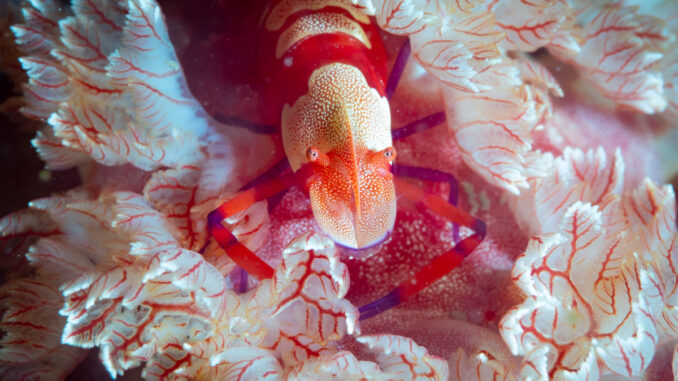
KHANH HOA – For more than 12 years, I used to dive all over the sea in Vietnam, especially Hon Mun reserve, Nha Trang, and take pictures.

Reader Tri Nguyen has a PADI Divemaster international certificate with more than 10 years of experience, cum professional underwater photographer (Underwater Photographer). Tri Nguyen has a passion for scuba diving and underwater photography. Thanks to his love of nature, especially for Vietnam’s marine life, he has completed a series of photos about Vietnam’s ocean world.
Hon Mun Marine Protected Area is located in Nha Trang Bay including islands such as Hon Tre, Hon Mieu, Hon Tam, Hon Mot, Hon Mun… and surrounding waters. The area is about 160 square kilometers including about 38 square kilometers of land and about 122 square kilometers of water around the islands.
To make this set of photos, my colleagues and I spent more than 3 years exploring, learning and performing hundreds of hours of diving, despite the rain, wind and difficulties. Underwater photography requires the photographer to have professional scuba diving skills. At the PADI Divemaster level, the diver can keep his whole body suspended but motionless, not floating or sinking under the water. The fast currents will be one of the challenges to get good or clear photos.

Imperial shrimp ( Periclimenes imperator ), also known as “common shrimp”, live symbiotically on an individual sea slug, surrounded by the lungs of the sea slug. Although the name makes people think of king crab, this shrimp is very small – less than 2.5 cm long.
Photo was taken at night at Hon Ong, Dam Mon Hamlet, Van Thanh, Van Ninh, Khanh Hoa, depth 20 m, water temperature 28 degrees Celsius. This shrimp usually lives in pairs and is peaceful with its host community. born as sea slugs or sea cucumbers. These organisms provide food and protection for the shrimp, in turn helping the host clean up algae and parasites.

Leaf Scorpionfish ( Taenianotus triacanthus ), live in the sand or near rocky areas near coral reefs, up to 10 cm long. I took this photo during a scuba diving trip to a depth of 25 meters, the water temperature is 24 degrees Celsius.

Painted Frogfish ( Antennarius pictus ), at a depth of 20 m, water temperature 23 degrees Celsius. This species can grow up to 30 cm long when mature. Toadfish swim with their feet. The color of this species is diverse because they always tend to change to suit the habitat. The skin is soft with small spines, with colored spots. This species lives singly near coral reefs, rocks up to a depth of 75 m.

Porcelain Anemone Crab ( Neopetrolisthes ohshimai ) at a depth of 15m, water temperature 28 degrees Celsius. This crab lives in symbiosis with anemones in the sand. Due to their slow mobility, they can hardly survive in the ocean without the protection of anemones.

Wire Coral Goby (Bryaninops yongei), lives and camouflages on corallines at a depth of 25 m, under the waters of Hon Mun. This is the most elaborate and time-consuming photo, because I spent more than 60 minutes hovering and motionless, avoiding fear of the fish swimming away.

Feather duster worms ( Sabellidae ), are a family of marine polychaete tubeworms characterized by protruding hairy branches. They live in tubes built from self-secreting mucus, reinforced with sand and shell fragments.
It took me more than 90 minutes to take this photo at 10m depth, because just seeing the movement these feathers will recede. You have to wait for them to naturally spread and swing with the water.

Ornate ghost pipefish – (Solenostomus paradoxus), hermaphrodite, can become female or male depending on habitat. Snorkelers can find them at depths of 3 to 25 meters, especially near rocky outcrops and corals.

Some islands and waters belong to Hon Mun Nature Reserve, Nha Trang City, Khanh Hoa. Photo: Google Earth
